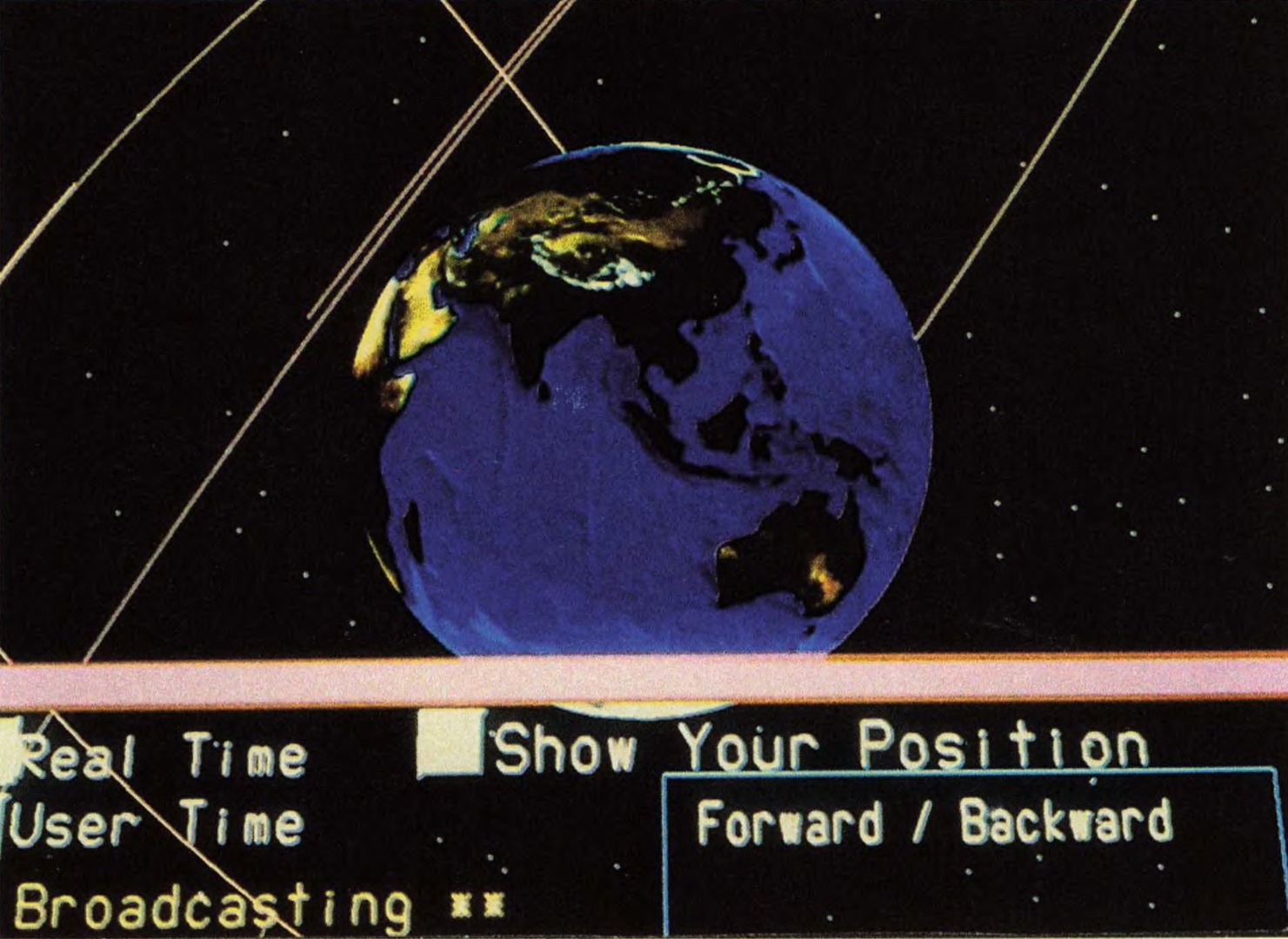“Solar System Modeler” by Stytz
Conference:
Experience Type(s):
Title:
- Solar System Modeler
Program Title:
- Interactive Communities
Organizer(s)/Presenter(s):
Collaborator(s):
Project Affiliation:
- Air Force Institute of Technology
Description:
In Solar System Modeler, users fly through the solar system, travel between the planets, watch moons in orbit, and ride with a comet toward the sun. This immersive virtual reality uses networked computers to compute and portray the movement of satellites, planets, moons, comets, and asteroids in the solar system. Based on each object’s orbital parameters and the date and time of day, motions are computed to support real-time interactivity with the virtual environment.
Solar System Modeler grew out of the observation that as the number of satellites in orbit increases, it becomes increasingly difficult to visualize the spatial relationships between space vehicles. The same difficulties arise in trying to under- stand the relationships among the planets, the planetary moons, the asteroids, and the comets in the solar system. When viewing the solar system, one would like to see the bodies that are visible from a point in space, the bodies that are visible from a location on a planet or moon, and the angular and distance relationships between two or more bodies.
Though it is difficult, if not impossible, to accurately visualize these extremely complex spatial and motion relation- ships, virtual environments allow an observer to comprehend them rapidly and relatively easily. However, portrayal of these relationships is a serious challenge. It requires an accurate 3D model of the objects; incorporation of orbital mechanics code; orbital motion data for the planets, moons, asteroids, comets, and satellites; and the locations of the stars.
Solar System Modeler relies upon distributed interactive simulation technology to create a complex environment by transmitting and sharing satellite position and velocity data with other actors in the virtual environment. The distributed interactive simulation approach uses several networked virtual environment stations to generate the single environment. Each node has its own local model of the environment, and there are no clients or servers.
Users of Solar System Modeler are completely immersed in the environment and can explore the entire solar system. For example, they can watch Jupiter’s moons from the surface of Jupiter, from Io, or from a distance. They can fly through Saturn’s rings, orbit Titan, and then hop over to Pluto. They can sit on the moon and watch satellites fly in orbit above the Earth. Location and point of view are entirely under the users’ control from within the immersive environment. There are several panels that display information about user-selected objects.
Solar System Modeler changes perceptions of our galactic neighborhood. The solar system’s great size and enormous complexity are immediately apparent, even to the non- scientist, from this immersive experience.





